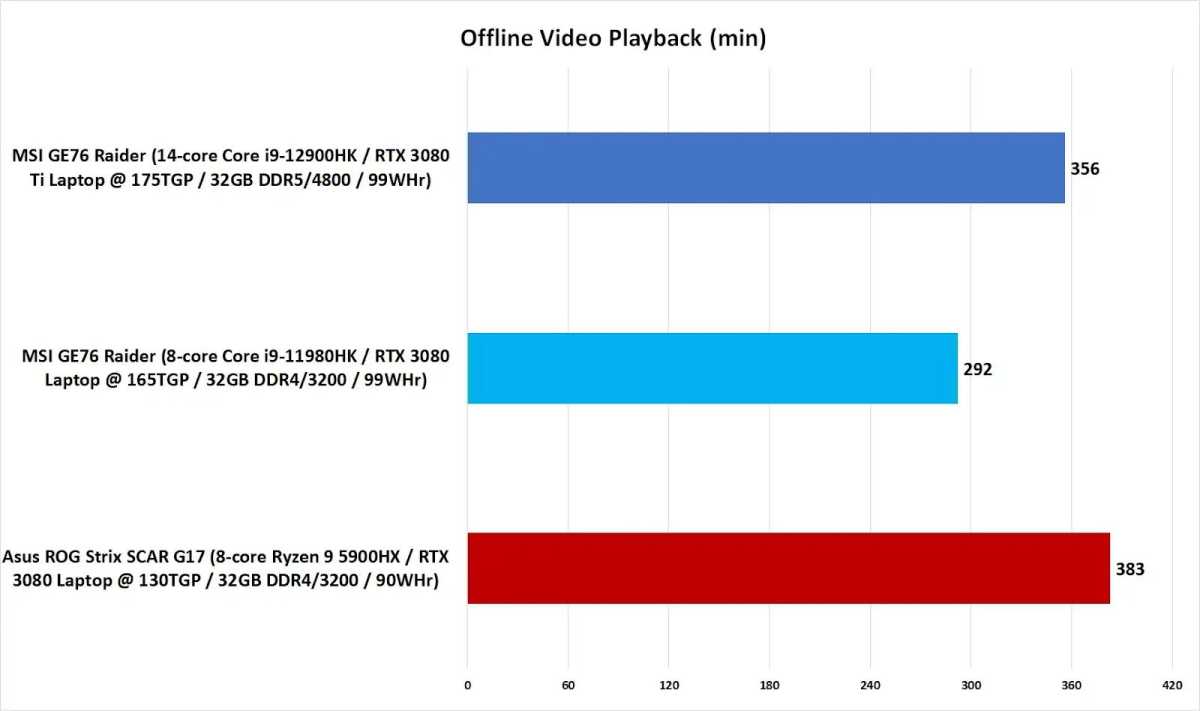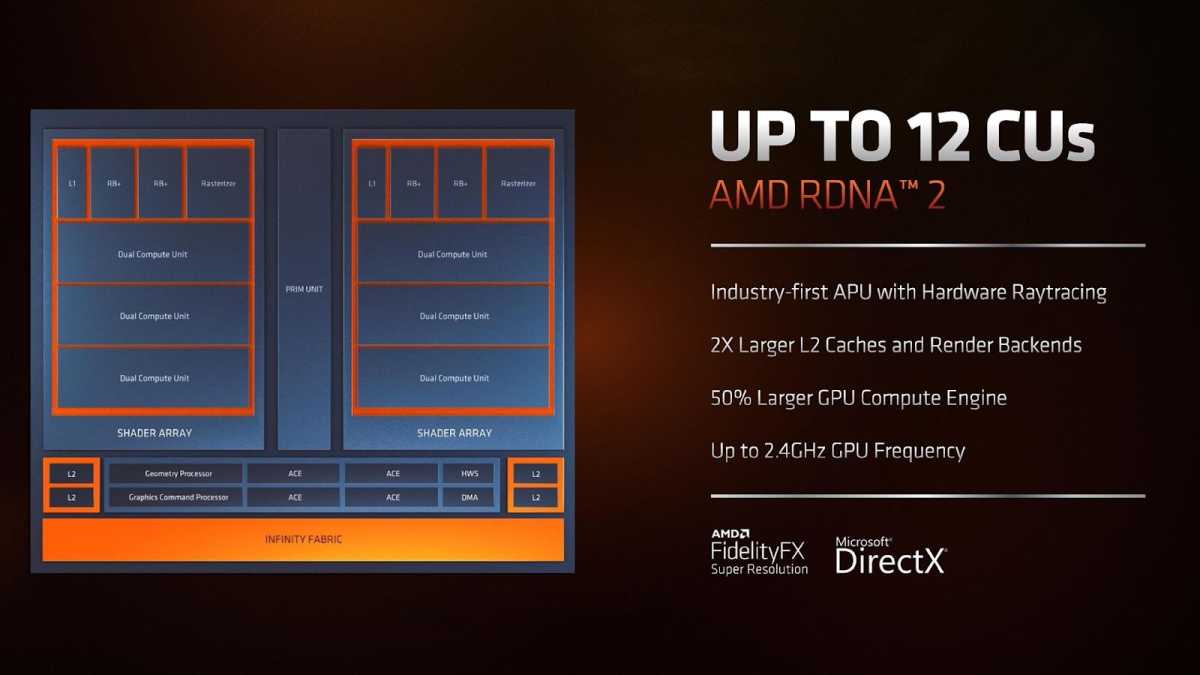Arcane CPU tweaks just made buying a laptop harder. The info you need:
The laptops hitting store shelves in 2022 will have a lot of cores. Intel’s 12th-gen Core processors for mobile, revealed at CES 2022 and starting to hit the streets now, pack up to 14 cores, and the desktop variants pack up to 16. This isn’t a record (AMD’s Threadripper desktop chip has up to 64 cores), but the new Intel Core line takes many-core processors mainstream.
Intel’s 12th-gen Core also pairs two different types of cores in one processor: an efficiency and a performance core. This throws a wrench into your next laptop purchase. Now, the type of cores used by a PC’s processor matters. GPU cores add another layer to this puzzle, as companies like Apple, AMD, and Intel are more aggressively advertising the power of integrated graphics.
All this muddles the once simple, clear-cut understanding of PC core counts. Here’s what you need to know to buy the right laptop in this new era of many-core design.
A big.LITTLE story
Using cores with different architectures in a single chip is an idea borrowed from smartphone chip design.
In their early years, chips designed for phones had an architecture with many cores of the same type, just like PC processors. However, chip architects knew they could increase efficiency if they could instead pair different architectures with varying design.
ARM embraced the concept in 2011 with big.LITTLE, which paired two different ARM core architectures on one chip. It was quickly adopted by new chips for phones and other mobile devices.
The idea didn’t make its way to the PC immediately, but Intel made its interest known with the reveal of a processor design called Foveros in 2018. Intel’s 12th-gen Core desktop processors, released in late 2021, finally brought the idea to mainstream consumer PCs.
Intel’s take: P-Cores and E-Cores
To be clear, Intel’s 12th-gen Core processors are not using ARM’s big.LITTLE design. That’s exclusive to ARM processors.
However, Intel’s 12t-gen Core processors do include two different types of cores on one chip, and those cores are designed to perform different roles. Intel calls them Performance-Cores and Efficient-Cores, or P-Cores and E-Cores for short. Each type of core has a different architecture.
Gordon Mah Ung / IDG
The P-Cores are derived from prior Intel Core processor architectures. They’re (relatively) large, have a lot of transistors, hit high clock speeds, and include multi-threading. The E-Cores have their lineage based in Intel’s less well-known Atom processor line. They’re smaller, have fewer transistors, and target lower clock speeds to improve their energy efficiency. The E-Cores also lack multi-threading.
This sound similar to big.LITTLE so far. However, Intel’s approach differs in one very important way.
ARM’s approach heavily leaned towards efficiency. Phones need to handle major tasks sometimes, but it’s more important they last for days, possibly weeks, in sleep.
This is less important for a PC, so Intel’s E-Cores are not just meant to improve efficiency. They provide a significant lift to 12th-gen Core’s multi-core performance. The P-Cores are quicker, yes, but the E-Cores don’t twiddle their thumbs while the P-Cores do all the work. Usually.
How to choose a many-core Intel processor
The combination of P-Cores and E-Cores lets Intel push core counts in mainstream processors. That’s good but certainly makes shopping more difficult. An eight-core processor is no longer just an eight-core processor. The exact cores used matters.
In general, P-Cores leans towards apps that rely on high per-clock performance or don’t scale as well across many cores. Gaming is a prime example, but older apps that only use a few cores will also lean on P-Core performance.
The E-Cores are a lot slower than the P-Cores in per-clock performance, and clocked lower to boot, so they’re only a performance benefit in seriously multi-threaded workloads. This includes software like Adobe’s Photoshop and Lightroom, Blender, Maxon Cinema 4D, and so on. (Our Core i9-12900HK laptop processor review wades deeply into a gauntlet of benchmarks that show all this.)
Let’s say you want a new 15-inch laptop. You’re considering a model that offers three Intel 12th-gen Core mobile processors.
- Intel Core i7-12800H: 6 P-Cores, 8 E-Cores
- Intel Core i7-12650H: 6 P-Cores, 4 E-Cores
- Intel Core i7-12500H: 4 P-Cores, 8 E-Cores
If you want to play games, run less heavily multi-threaded apps, or want a very fast laptop for general use, the Intel Core i7-12800H is the clear top pick because it has the most cores overall.
However, you could save some money and see nearly identical performance in those tasks by choosing the Intel Core i7-12650H. It has half as many E-Cores as the 12800H, yes, but you’d be unlikely to see a difference in the apps you frequently use.
But what if you want a laptop for video editing? The Intel Core i7-12800H leaps out as the best pick and is worth stretching your budget to obtain. It has more P-Cores and E-Cores than either alternative. The extra E-Cores will make a meaningful difference in the apps you’re likely to use.
Can’t afford the i7-12800H? You face a tough choice. The i7-12650H has more P-Cores, but the i7-12500H has more E-Cores, so they could trade blows depending on how the apps you use are optimized. In the end, the winner may come down to the specifics of the laptop’s power consumption and thermal performance.
What do Intel’s E-Cores mean for battery life?
Intel’s Efficient Cores hint that the company’s 12th-gen Core processor will greatly improve battery life, but that’s not the case.
The details of Intel’s 12th-gen Core mobile, revealed at CES 2022, made this clear. Intel tactfully avoided bold battery life claims. Most laptop makers followed Intel’s lead, and those that did discuss battery life said nothing remarkable.
Our initial look at Intel’s 12th-gen Core mobile backed this up. PC World’s Executive Editor, Gordon Ung, tested the battery life of an MSI Raider GE76 with a Core i9-12900HK processor and compared it to a MSI Raider GE76 with a Core i9-11980HK processor.

Gordon Mah Ung / IDG
The new 12th-gen model lasted about 20 percent longer. That’s nothing to laugh at, but still left the MSI Raider GE76 with a tad less than six hours of battery life. The new Intel 12th-gen laptop remained slightly behind a similar Asus laptop with a Ryzen 9 processor.
In short, the arrival of E-Cores doesn’t translate to a huge gain in battery life, and a laptop with more E-Cores doesn’t necessarily last longer on a charge than one with less. It’s more important to consider the size of a laptop’s battery (bigger is better) and whether it has a discrete GPU (which usually decreases battery life).
What about AMD and Apple?
AMD’s processors have not embraced Intel’s new approach to processor design, and that won’t change any time soon. The upcoming Ryzen 7000-series processors, based on the exciting new Zen 4 architecture, are not expected to use varying core architectures on a single chip—they’ll likely stick to traditional cores with simultaneous multi-threading enabled, just like before. There’s no official word on when AMD will take this approach, but rumors suggest we’ll see it no sooner than late 2023.
Apple uses ARM’s big.LITTLE design in its M1, M1 Pro, M1 Max, and the way it implements different core architectures is different from Intel. Apple has control over all aspects of chip design and the operating system. It also has only a handful of different chips. This makes shopping a lot less complex. You can buy the best M1 chip you can afford without worrying about the number of performance and efficiency cores included.
Apple’s design is also more focused on using the efficiency cores to preserve battery life, which is why Apple’s new MacBooks can achieve unmatched battery life in light-load tasks like web browsing or streaming video.
GPU cores don’t work like CPU cores
Cores aren’t just for CPUs. Apple now advertises integrated GPU cores in its marketing. AMD and Intel use language that may sound similar. So, is there a way to compare and judge GPU cores at a glance?

AMD
Well, no – not really. GPU design is far different from CPU design. That’s why core count seems to vary so widely between different GPU architectures, while CPUs fall into a relatively limited range.
Intel’s Iris Xe graphics offers up to 96 execution units, while an Apple M1 Max can pack up to 32 GPU cores, and AMD’s Ryzen 6000-series APUs have up to 12 Compute Units. Yet Intel’s Xe graphics are the least powerful of this trio, while Apple’s M1 Max is by far the quickest.
GPU specifications are only useful when comparing GPUs in the same product line. Otherwise, you’ll have to read GPU reviews and comparisons to know how each model compares.
Breaking it down
New laptops with a combination of different core architectures makes shopping more complex, and I think this is just the beginning. I wouldn’t be surprised to see a core count arms race erupt between AMD, Apple, and Intel.
Most people should ignore total core count and look at the number of performance cores (or P-Cores) available. These cores will perform well across the broadest selection of apps. This also avoids the trap of high efficiency core counts. Intel’s new 12th-gen Core U-Series chips, for example, have up to 10 cores. That seems awesome…but only two of those cores are P-Cores.
Don’t rely on efficiency cores (or E-Cores) for improving battery life. There’s a lot more to battery life than the presence of efficiency cores, and more efficiency cores does not mean better battery life.
Buying the right laptop processor is more complex than ever – but this advice, paired with our tried-and-tested recommendations for the best laptops, will keep you on the right track.
For all the latest Technology News Click Here
For the latest news and updates, follow us on Google News.
